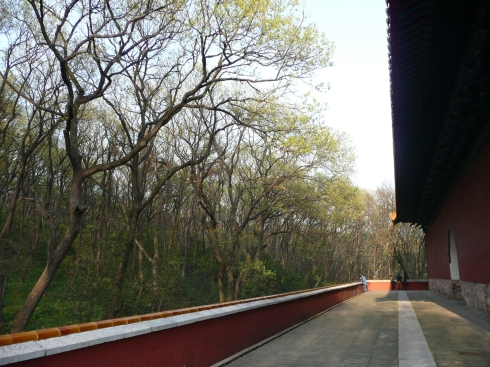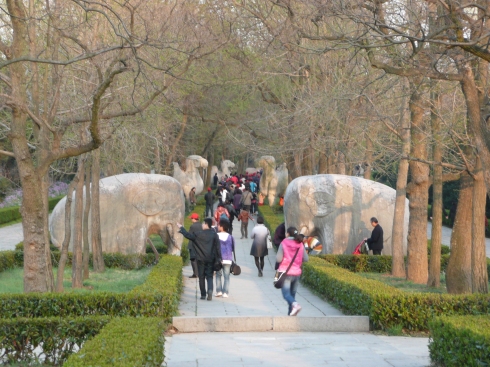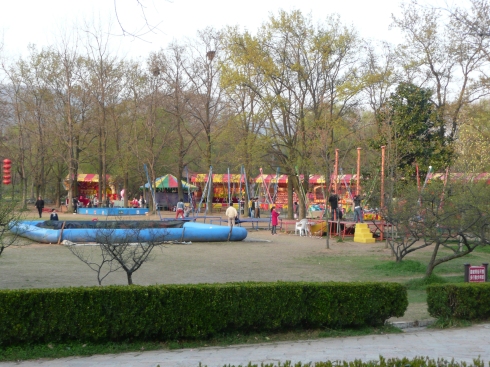Until early April, the only places I had been to in China were Beijing (and surrounding tourist sites: the Great Wall and the Ming Tombs) and Shanghai. It looks like spring is the season of bank holidays in China too, gracing those who work with long weekends and making my weekdays a bit less lonesome.
With some friends, we decided to go explore Nanjing which is about an hour and a half to the northeast of Shanghai. We woke up early and headed there with the fast train that goes all the way to Beijing. According to our research and guides, there are few things to see in Nanjing. After all, it was the southern capital* for a few centuries and dynasties. The trip was all in all very interesting but unfortunately not for the reasons we had anticipated.
Various sources will point you to a few places. Although we haven’t visited all of them, if you should go to one, it is the Ming Tombs. Yes as in Beijing, Nanjing’s got its own version of it. In many ways, they are similar to those outside Beijing, only perhaps smaller. But the site is beautiful, especially with all the plum trees in full bloom (which entitled us to a discount on entry tickets – plum tree festival or something), the buildings are impressive and the promenade from one tomb to the other very pleasant. Like for many historic sites in China, there is no available explanation on the site and you have to put up with aberrant things like a kids’ entertainment park within the premises of a UNESCO World Heritage Site. But hey, it’s China and compared to what we saw before, it isn’t such an eyesore.
That’s for the must. What you should by all means avoid is the Purple Mountain. It may have been an important site at some point, but now it’s just an attraction park for Nanjing’s inhabitants to escape the city and picnic or play cards. Thankfully, we took the cable car all the way to the top and back down (our initial plan was to walk) and then strolled from absurdity to absurdity, i.e. bad modern structures and sculptures supposedly spiritual or reminiscent of important people. The only thing we got out of it was probably some fresh air for our soiled Shanghai dwellers’ lungs.
Back in town, the Linggu Temple is not really worth your while. It now feels more like a roundabout than a Buddhist Temple set in a park. Clearly we didn’t have the time to see everything, there are a few museums and other spots to check out.
That’s for the bad stuff. I’m not trying to undermine Nanjing or its heritage, but I can’t help complain about creating fake heritage sites and not emphasising properly (through information or design) those sites that are of true importance.
Now what I found of real interest is that Nanjing is actually a lively and pleasant city. At the moment, it has “only” 8 million inhabitants but clearly the authorities are foreseeing massive expansion of urban areas. We arrived at the southern train station which is in the middle of nowhere. However, it is surrounded by construction sites and I’m sure in a couple of years or so a whole neighbourhood will have emerged out of the ground. Another thing about the station, it is ABSOLUTELY MASSIVE. It must be the size of two football pitches. You could organise the Athletics Championship in that station.
Also the fast train’s tracks to Nanjing are elevated along the whole journey. It makes you realise that the level of investment in infrastructure from the government is phenomenal. I guess that’s where most of the money is going, along with defence, given that taxpayers pay high taxes but don’t really benefit from any social or economic security.
* nán = south, jīng= capital; běi = north … Běijīng = northern capital




















Leave a comment